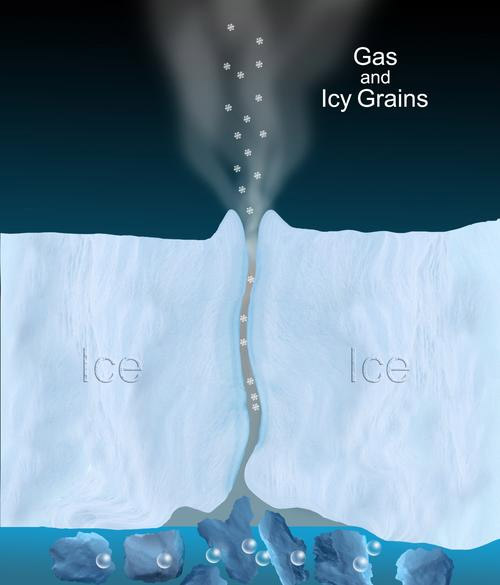Saturn's Moon Does Harbor an Ocean, New Evidence Suggests

Icy plumes of water vapor erupting from Saturn's moonEnceladus have left scientists divided over whether a liquid ocean lies hiddenbeneath the icy surface. Now evidence from a 2008 plume fly-through by NASA'sCassini spacecraft has turned up short-lived water ions that suggest liquidwater does indeed exist inside the moon.
Negatively charged ions represent atoms that have moreelectrons than protons, and they seem relatively rare in the solar system. Scientistshave found negative ions only on Earth, Saturn'smoon Titan, the comets and now Enceladus. But negative water ions appear onEarth's surface only where ocean waves or waterfalls keep liquid water inmotion ? a suggestive hint of liquid water also in motion somewhere insideEnceladus
Cassini's plasma spectrometer also turned up negativelycharged ions of hydrocarbons, or compounds made entirely of hydrogen andcarbon.
"While it's no surprise that there is water there,these short-lived ions are extra evidence for sub-surface water and where there'swater, carbon and energy, some of the major ingredients for life arepresent," said Andrew Coates, a planetary scientist at the UniversityCollege London and lead author on the latest Cassini study.
The measurements came from samples collected duringCassini's icy plunge into an Enceladus plume on March 12, 2008. TheU.S.-European spacecraft first discovered the existence of such plumes in 2005,which shoot thousands of miles into space. Many of the icy particles and watervapor eventually escape the moon's gravity entirely and help create Saturn'shuge outermost ring, called the E-ring.
Cassini's repeateddips into the icy plumes of Enceladus have fueled debate about thepossibility of a saltyocean that lies hidden on Saturn's sixth largest moon. Many scientiststhink that the geysers not only represent good evidence of liquid water, butalso mark Enceladus as a possible world for life to arise.
Still, other studies challenged the liquid ocean idea byarguing that the water vapor in the plumes could have just as easilytransformed directlyfrom solid ice, in the process known was sublimation.
Get the Space.com Newsletter
Breaking space news, the latest updates on rocket launches, skywatching events and more!
The new discovery of negatively charged water ions maytilt the balance of evidence once more in favor of a liquid ocean. And at leastonce physicist, Brian Cox at the University of Manchester in the UK, hasalready handed out a wink and a nod to the group of Cassini scientists headedby Carolyn Porco.
"You always said to me that you'd find water onEnceladus :-)" wrote Cox to Porco today via Twitter.
- Special Report: Cassini's Mission to Saturn and its Moons
- Encore For Enceladus! Saturn Moon Ripe For Astrobiology Exploration
- Video: Enceladus-Cold Faithful
Join our Space Forums to keep talking space on the latest missions, night sky and more! And if you have a news tip, correction or comment, let us know at: community@space.com.
Jeremy Hsu is science writer based in New York City whose work has appeared in Scientific American, Discovery Magazine, Backchannel, Wired.com and IEEE Spectrum, among others. He joined the Space.com and Live Science teams in 2010 as a Senior Writer and is currently the Editor-in-Chief of Indicate Media. Jeremy studied history and sociology of science at the University of Pennsylvania, and earned a master's degree in journalism from the NYU Science, Health and Environmental Reporting Program. You can find Jeremy's latest project on Twitter.









